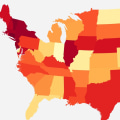The tax bracket in which your highest dollar is located is your marginal tax bracket. This category is your highest tax rate, which applies to the upper part of your income. Tax credits can lower your tax bill dollar-for-dollar; they don't affect what category you're in. A tax rate is a percentage at which income is taxed, while each tax category is a range of income with a different tax rate, such as 10%, 12%, or 22%, known as the marginal rate.
A taxpayer's tax bracket doesn't necessarily reflect the percentage of their income they'll pay in taxes. Tax deductions and credits provide tax breaks to high-income people and, at the same time, reward useful behaviors, such as donations to charities. In other words, taxpayers will pay the lowest tax rate in the first “tranche” or level of taxable income, a higher rate at the next level, and so on. The progressive tax system means that people with higher taxable incomes are subject to higher federal tax rates, and people with lower taxable income are subject to lower federal tax rates.
Having a rough idea of your tax bracket can help you estimate the fiscal impact of important financial decisions. Tax brackets result in a progressive tax system, in which taxes increase progressively as a person's income increases. To determine the effective tax rate, divide the total tax due (line 1 of Form 1040) by your total taxable income (line 1). Those who oppose tax categories and progressive tax lists maintain that all people are equal before the law, regardless of income or economic situation, and that there should be no discrimination between the rich and the poor.
A common misconception is that your marginal tax rate is the rate at which all of your income is taxed. Unless your taxable income places you in the lowest tax bracket, you will be charged multiple rates as your income increases; all your income is not subject to the rate in the category classified for your income level. The progressive tax system ensures that all taxpayers pay the same rates at the same levels of taxable income. Opponents also assert that raising taxes with higher income levels can (and does) lead rich people to spend money to exploit loopholes in tax law and to find creative ways to protect profits and assets, often with the result that they actually end up paying less taxes than the less well-off, which deprives the government of revenues.
The United States uses a progressive tax system, which means that different parts of its income are taxed at different rates. As an expert in taxation and finance, I can tell you that understanding how taxes work is essential for making informed decisions about your finances. Knowing what puts you in a different tax bracket can help you plan ahead and make sure you're taking advantage of all available deductions and credits. It's important to remember that while having a higher taxable income may mean you're subject to higher federal taxes, it doesn't necessarily mean you'll pay more overall due to deductions and credits. Taxes can be complicated but understanding how they work can help you make better financial decisions. Knowing what puts you in a different tax bracket can help you plan ahead and make sure you're taking advantage of all available deductions and credits.











Leave a Comment